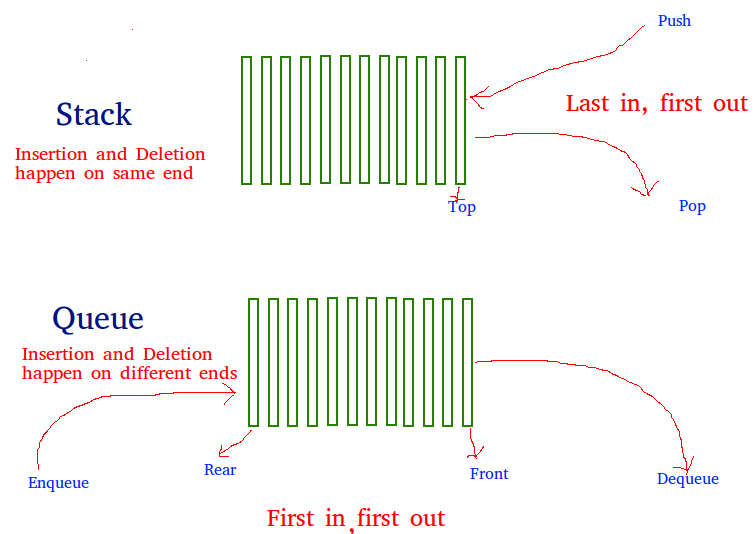Stack:
A stack is a data structure that consists of Nodes. Each Node references the next Node in the stack, but does not reference its previous.
Common terminology:
Push - Nodes or items that are put into the stack are pushed
Pop - Nodes or items that are removed from the stack are popped. When you attempt to pop an empty stack an exception will be raised.
Top - This is the top of the stack.
Peek - When you peek you will view the value of the top Node in the stack. When you attempt to peek an empty stack an exception will be raised.
IsEmpty - returns true when stack is empty otherwise returns false.

Some concepts:
FILO
First In Last Out: This means that the first item added in the stack will be the last item popped out of the stack.
LIFO
Last In First Out This means that the last item added to the stack will be the first item popped out of the stack.
Stack Visualization: Here’s an example of what a stack looks like.
Push O(1)
Pushing a Node onto a stack will always be an O(1) operation. This is because it takes the same amount of time no matter how many Nodes (n) you have in the stack.
Queues:
-Enqueue - Nodes or items that are added to the queue.
-Dequeue - Nodes or items that are removed from the queue. If called when the queue is empty an exception will be raised.
-Front - This is the front/first Node of the queue.
-Rear - This is the rear/last Node of the queue.
-Peek - When you peek you will view the value of the front Node in the queue. If called when the queue is empty an exception will be raised.
-IsEmpty - returns true when queue is empty otherwise returns false.

Done by Omar-zoubi